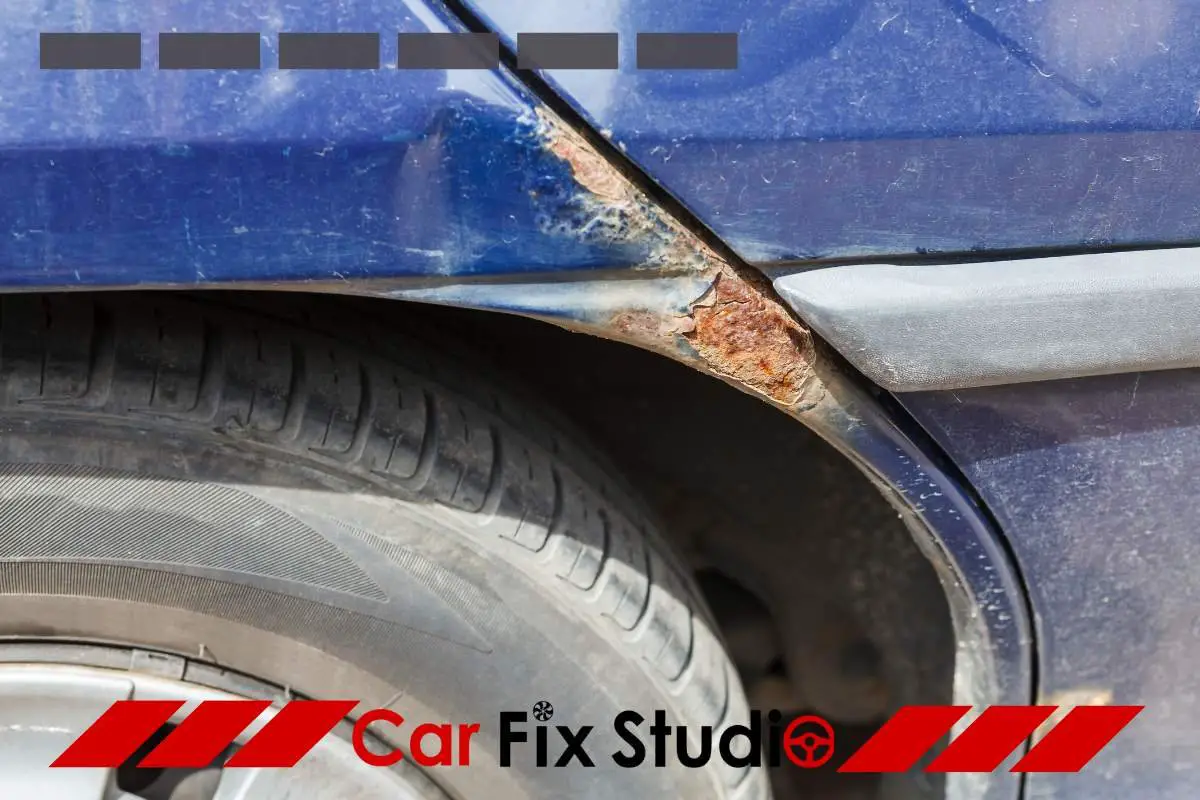Table of Contents
As winter descends, the picturesque landscapes filled with snow and ice bring along a less welcome companion – road salt. While road salt, a mixture of sodium chloride, calcium chloride, and sand, is essential for maintaining safe driving conditions, it poses a significant threat to your vehicle, particularly the car paint.
This article delves into the damaging effects of road salt on automobile paint and how you can protect your vehicle during the harsh winter months. Before starting the article, watch the video below:
What is Road Salt?
Road salt is primarily used to lower the freezing point on road surfaces, reducing ice formation and providing safer driving conditions. The most common types of road salt are sodium chloride and calcium chloride, often mixed with sand to improve traction and keep the salt in place. These salts may do serious damage to your car’s paint and substructure even if they are good for enhancing road safety.

Road Salt
Does Salt Damage Car Paint?
Yes, salt is corrosive and can eat through the paint on your vehicle over time. Your car’s undercarriage may lead to corrosion and suffer damage as a result of salt. Rust not only mars the aesthetic appeal of your vehicle but can also cause significant damage to its structural integrity.
Also Read: Damage Car Paint: 25 Common Causes You Need to Avoid

The effect of salt on car paint
What Does Road Salt Do?
Road salt sticks to the surface of your car and, when exposed to moisture, creates a salt brine. The tiniest scratches and fissures in the paint of your automobile might allow this brine to leak in. When the temperature drops, the brine can freeze and expand, exacerbating the damage to the paint. Over time, this cycle of damage can lead to extensive rusting and corrosion.

The effect of salt on car paint
How Fast Does Road Salt Rust Cars?
The speed at which road salt causes rust can vary based on several factors, including the concentration of salt, the temperature, and how often the vehicle is exposed to moisture. However, without proper care, significant rust spots can start to appear within a couple of winters.

Car rust caused by road salt
How to Tell if a Car Has Salt Damage
Salt damage often first appears as small bubbles or chips in the paint, particularly on the car’s lower body. Over time, these spots can grow and develop into visible rust patches. Regularly inspecting your automobile, especially after the winter months, can help spot and address salt damage early.

The effect of salt on car paint
How to Clean Road Salt Off Your Car
Regular car washes are crucial in the winter months. They help remove the salt from your automobile’s surface, preventing it from forming a corrosive brine. Pay close attention to the undercarriage, brake lines and fuel lines which are especially vulnerable to salt exposure. Additionally, a solution of baking soda and water can help neutralize the salt and prevent further corrosion.
How to Protect Your Car Paint During the Winter
The easiest approach to avoid salt damage to your vehicle’s paint is to protect it before winter. Here are some techniques to protect the paint on your vehicle:
Wax Your Car Before Winter Comes

Waxing on car paint
Before winter sets in, you should polish your vehicle. You’ll have more time to get to a vehicle wash and an additional layer of protection thanks to the wax.
Wash Your Vehicle Regularly
To stop rust on your mechanical components, be sure to obtain a wash that additionally cleans the undercarriage. To give the water an opportunity to dry before the temperature lowers, we strongly advise getting this wash while the temperature outside is at least 40 degrees throughout the day.

Washing the car to prevent salt damage to the car’s paint
Protect Your Paint
Rust gets into exposed metal surfaces, so make sure the paint covers everything it should. Use touch-up paint to keep salt from wearing away into dings and scratches.
Replace Rusted Parts
Once rust forms, it’s difficult to remove and can spread to other parts. You can try to remove it from the surface, but in some cases, it’s easier to replace painted parts entirely.

Replacing a rusty wheel disc with a new wheel disc
Using Products to Help Protect Your Car
Products like Ceramic Pro, paint protection film and automotive coating systems offer additional protection. Regular applications of products like Underbody Rinse, Salt Shield, and Ultimate Ceramic Finish can also help protect your car from the corrosive effects of road salt.
Conclusion
While road salt is a necessary evil in winter driving, it doesn’t mean your car’s paint has to suffer. With regular care, timely washes, and the right protective measures, you can keep your vehicle looking its best, no matter what the season throws at it.
Frequently Asked Questions
Can salt scratch car paint?
Yes, salt can scratch your vehicle’s paint, especially if it’s wiped or brushed off dry. It’s best to rinse off the salt with water or a car wash.
How does one get road salt off of a car?
Regular car washing is the greatest approach to getting rid of salt, especially during the winter. A thorough rinse followed by a gentle wash can effectively remove the salt.
Does salt chip the car paint?
Yes, salt can chip car paint. The salt brine can seep into existing chips and cracks, causing them to expand.
Also Read: Stress Cracks in Car Paint: 5 Causes and How to Avoid Them
Does salt remove paint?
Over time, the corrosive effects of salt can cause paint to peel or flake off, exposing the metal underneath.
Can you wipe salt off a car?
Wiping salt off dry can scratch the paint. It’s best to rinse the salt off with water or at a car wash.
Is salt water bad for car paint?
Yes, salt water can be even more damaging than salt alone as it can more easily seep into cracks and cause corrosion.
What is most corrosive to car paint?
Road salt, bird droppings, and acid rain are among the most corrosive substances for car paint.
Also Read:Does Rain Damage Car Paint?
How soon does salt damage the paint of a car?
The damage can start within a few days of exposure, but significant rusting usually takes a couple of winters to become noticeable.
What removes salt from automobiles?
To make a cleaning solution, combine warm water and white vinegar at a ratio of 1:1. On the region, spray or apply the solution. Use a brush to lightly scrape the area for bringing the salt onto the surface. To remove the salt, press a dry cloth across the spot.

